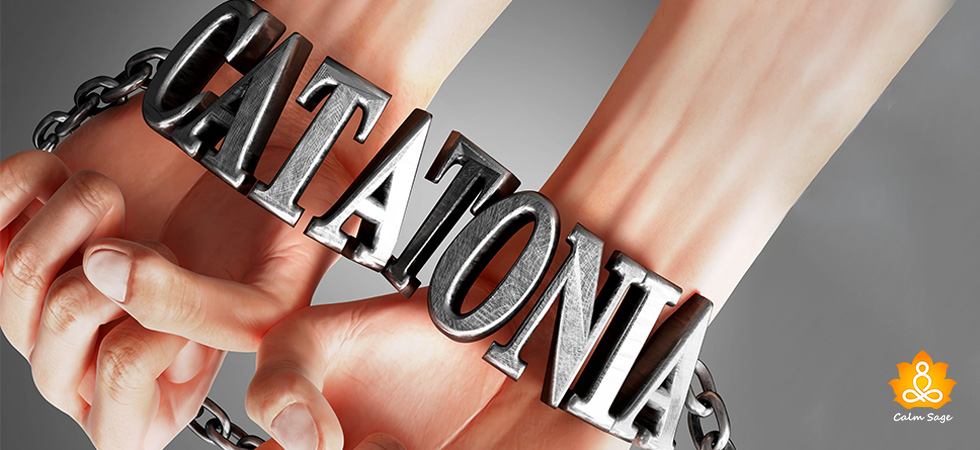Published In
Mental Disorders

Understanding Catatonia: A Grossly Disorganized Behavior
Catatonic behavior is seen in many individuals across the globe. Catatonia can have serious outcomes which should not be ignored at any cost. Catatonia will affect you mentally as well as physically.
For years now catatonia was being considered as a symptom of schizophrenia. But now doctors have started to consider catatonic behavior as a different disorder and not just a type of schizophrenia.
Did you know more than 10% of people with psychiatric illness develop catatonic behavior?
Let’s look at it in detail…
What is Catatonia?


Catatonic behavior is neuropsychiatric behavioral syndrome which includes obstructed/abnormal movement, abnormal behavior, withdrawal and sometimes immobility. It is a psychomotor disorder, i.e. catatonic behavior affects both thoughts and movements.
There are a variety of symptoms which can be experienced by you if you have catatonia. I always had one question in mind, how long does catatonic behavior last?
Catatonic behavior has the ability to last for years but there are people who have had catatonic experience for a shorter span. Therefore, it can be said that Catatonia can last for hours or days to years.
Catatonia mostly occurs in the form of episodes. These episodes can recur after you have had an initial episode of catatonia.
There are two ways to look at catatonia:
- Intrinsic: when there is no leading cause for catatonia (when it doesn’t not occur because of an already existing psychological disorder.
- Experinsic: when the catatonic behavior occurs as a part of another mental health condition. When It occurs as a symptom of another disorder, it is considered extrinsic.
Types of Catatonia
According to the most recent information, catatonia is no longer divided into any types. DSM 5 now says that catatonia is whole and doesn’t have any further divisions.
Interestly many professionals and doctors still believe that catatonia can be divided into types. They choose to deal with catatonic behavior according to their understanding of it. Many say that it’s easier to diagnose and plan the treatment when the disorder is divisible.
According to these professionals catatonic behavior can be divided in 3 types:
1. Retarted catatonia: It is also known as akinetic catatonia. This form of catatonia is the most common one. Retarted catatonia is when movement becomes very slow or there is no movement at all.
Someone with this type of catatonia does not speak as much, they might just start at the wall. They will basically be stuck at something.
2. Excited catatonia: it is also known as hyperkinetic catatonia. When someone is suffering from excited catatonia he/she may become aggressive, agitated and restless. There are so many cases of excited catatonic patients indulging in self-harm.
3. Malignant catatonia: In this type od catatonic behavior the patient begins to experience delirium. They have a lot of brain fog, confusion, reduced thinking ability and reduced awareness about their surroundings.
They may also have blood pressure issues, breathing problems and slow heart rate. There is dehydration, kidney failure and blood clots as well.
What Are The Signs And Symptoms of Catatonic Behavior?
Catatonia has a large range of symptoms which as as follows:
- stupor ( the one who can’t move or speak, blankly stare at something)
- Waxy flexibility (when someone stay in one position for a long time for no reason at all)
- Reduced appetite
- Echolalia (when someone repeats what the other person says)
- Catalepsy (type of muscular rigidity)
- No response to external stimuli
- Echopraxia (when someone repeats other person’s actions/movements)
- Mutism
- Random purposeless movement
- Restlessness
- Agitation and frustration
- Grimacing
- Fever
- rigidity
Physical symptoms
- Sweating
- Slow heart rate
- Breathing problems
- Blood pressure issues
If you see some of these symptoms in you or someone you may know please schedule a meeting with your doctor or some mental health professional.
Also read: Catatonic Depression: Symptoms, Causes & Treatment
What Can Cause You To Have Catatonic Behavior?
As of now, the actual cause of catatonia has not been found. Although catatonic behavior is mostly seen when an individual is going through another acute psychological illness. According to what DSM-5 catatonia can be caused by
- Neurodevelopmental disorders
- Bipolar disorder
- Depression
- Psychotic disorders
- Parkinson’s disease
- Encephalitis
Endnote
Did you know almost 25% of mental health patients develop catatonic behavior. The treatment for Catatonia may include psychotherapy and electroconvulsive therapy (ECT). The response to the treatment is also quite quick.
I hope you liked reading the blog. Do share this blog with whoever you think can benefit from it. Visit our website for more such informative blogs.
Thanks for reading
Take care and stay safe!
